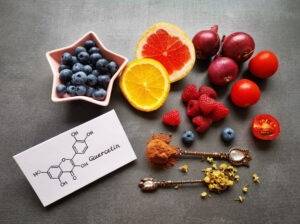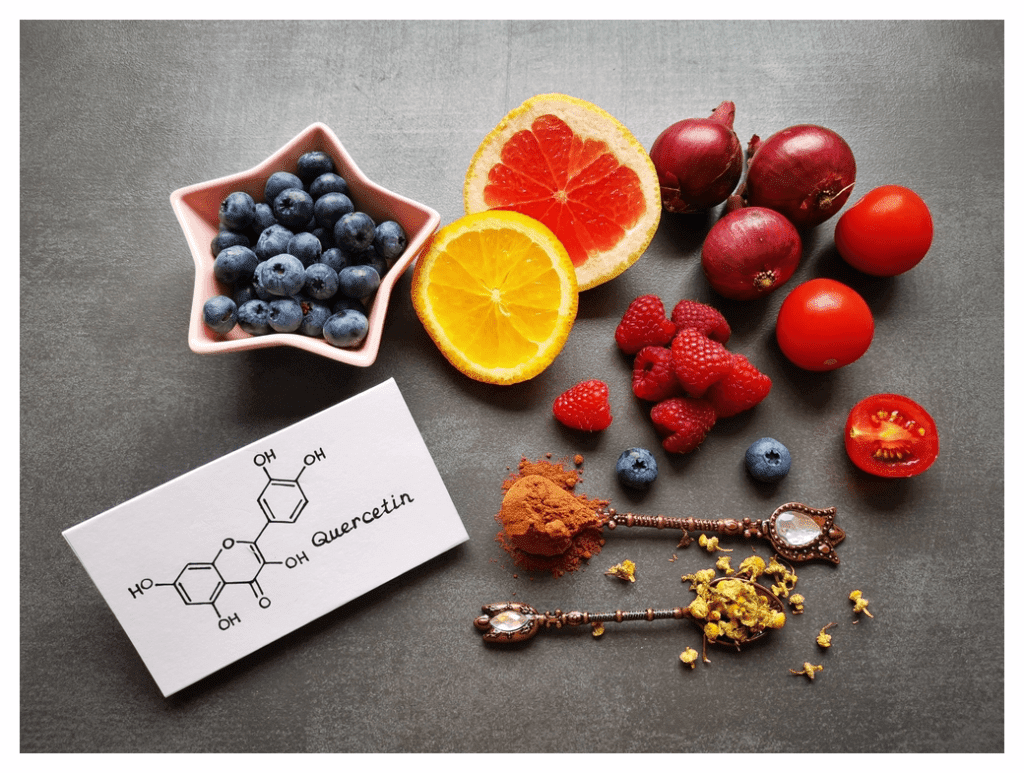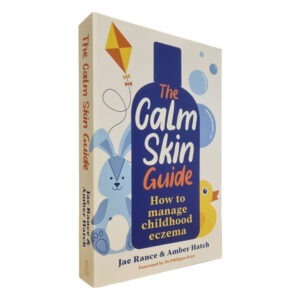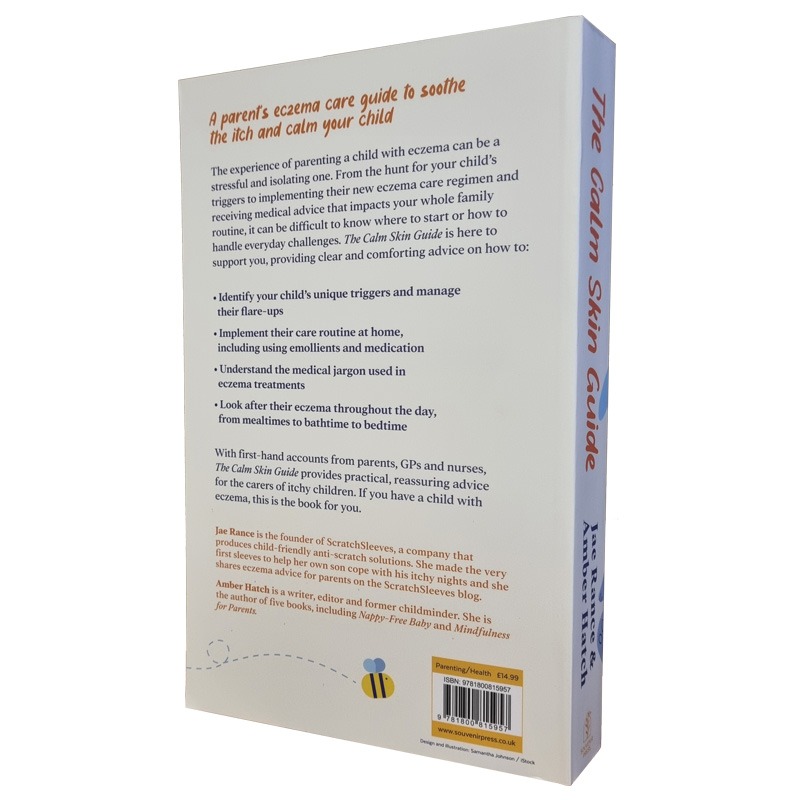Flavonoids and eczema: Why you should eat your greens (and yellows, purples, reds…)



As children we are all told to eat our vegetables and to have lots of colour on our plates (not just tomato ketchup). And our parents weren’t wrong. Colourful vegetables and fruit are packed full of natural flavonoids which are known to be beneficial in many different ways. But can these chemicals affect eczema as well?
In this article, we look at the role these chemicals can play in the management of eczema. To make life easy, we also have a list of child friendly fruit and veg with high levels of eczema friendly flavonoids.
What are flavonoids?
Flavonoids are natural chemical compounds found in a range of fruits, vegetables, nuts and grains. There are over 4,000 compounds classified as flavonoids. They are known to possess a number of medical benefits including antioxidant, anti-inflammatory, anti-cancer and anti-viral properties.
There is currently no daily recommended intake for flavonoids. However, the UK government guidance of 5 portions of fruit and veg a day is well known. This is based on WHO guidance to eat at least 400g of fruit and veg per day. New research from the team behind the Zoe App (made famous by its contributions to Covid research, but actually focused on understanding how food affects human health) suggests that this guidance should be extended and we should aim to eat at least 30 different plants per week. There is no doubt that eating plenty of fruit and veg is really important for long term health. Flavonoids are thought to be one of the drivers behind these benefits.
Flavonoids and eczema
There is growing research indicating that some flavonoids are able to supress eczema symptoms by damping down inflammation and rebalancing the immune system1. These findings have been used to explain the results of an older study which showed that a vegetarian diet, high in flavonoids, can reduce the symptoms of adult eczema sufferers. While this research is still in its infancy, and has yet to be reproduced in humans, it does seem that a diet rich in flavonoids can help to alleviate eczema symptoms2.
Quercetin is one of the most common flavonoids and is found in a huge range of plants including berries, apples, buckwheat, onions, and citrus fruits. Quercetin acts as a natural antihistamine as well as a natural anti-inflammatory. In the laboratory, is has been shown to reduce inflammation and improve wound healing3 as well as inhibiting histamine release4. Quercetin has also been suggested as a possible anti-allergy treatment5. Interestingly, a recent paper suggests that quercetin not the most powerful flavonoid when it comes to its anti-allergenic activities. Research suggests that luteolin, apigenin and fisetin appear to potentially have much more powerful anti-allergy effects1. Luteolin and apigenin are found in, amongst other things, celery, parsley and thyme, fisetin is found in strawberries, apples and mangos.
Diosmetin and naringenin, found in citrus fruits, been shown to improve the eczema symptoms of eczema in mice by improving the skin barrier and reducing inflammation5,6. Similar research into formononetin, found in soybeans and chickpeas, has shown that it also has the potential to reduce eczema symptoms7. Chrysin, found in honey and propolis, has been shown to have anti-inflammatory effects as well as protecting the skin from UV sun damage8.
Research into the active ingredients of traditional herbal remedies used in the treatment of eczema and other ailments has identified a number of rarer flavonoids that could explain how these traditional remedies work.
Foods rich in flavonoids
Flavonoids are typically found in brightly coloured fruit and vegetables. As a rule of thumb, the more colourful the food the higher the flavonoid content will be. When cooking, be aware that overcooking or cooking on too high of a heat can dramatically decrease the flavonoid content. Eating fruit and veg raw or lightly cooked will maximise the benefits.
- Berries and cherries, especially strawberries, blueberries and blackberries
- Red cabbage
- Onions, especially red onions
- Spinach and kale
- Most herbs, especially parsley and thyme
- Citrus fruits, especially citron
- Soybeans
- Capers
You’ll have not doubt spotted that a few of these flavonoid rich options are also potential sources of eczema aggravation through allergy or chemical intolerance. As with all things eczema, finding the right solution for you and your family will be a case of trial and error. But stick with us on this one, the flavonoids in colourful fruit and veg really do have the potential to reduce eczema symptoms as well as improve your health more generally.
Follow these links for information on more fruit and vegetables with high flavonoid levels. Try our tasty, flavonoid rich Puy lentil, apple and red cabbage recipe.
Flavonoid supplements
Supplements of particular flavonoids are available. However, whilst these supplements are deemed safe in moderate doses for short periods (less than 12 weeks), there is little safety information for the use of these supplements in children. Eating a diet rich in fresh fruit, vegetables and plants should ensure your child has no need for these supplements.
So are flavonoids good for eczema?
There is good and growing evidence that many flavonoids can help with controlling eczema symptoms. Ensuring that your child is eating a wide variety of fresh fruit, vegetables and herbs is a great way to ensure that their bodies have the best chance of dealing with their eczema.
Our Sources
- Kawai, M., Hirano, T., Higa, S., Arimitsu, J., Maruta, M., Kuwahara, Y., Ohkawara, K., Hagihara, K., Yamadori, T., Shima, Y., Ogata, A., Kawase, I., & Tanaka, T. (2007). Flavonoids and related compounds as anti-allergic substances. Allergology international : official journal of the Japanese Society of Allergology. https://pubmed.ncbi.nlm.nih.gov/17384531/
- Tanaka, T., Kouda, K., Kotani, M., Takeuchi, A., Tabei, T., Masamoto, Y., Nakamura, H., Takigawa, M., Suemura, M., Takeuchi, H., & Kouda, M. (2001). Vegetarian diet ameliorates symptoms of atopic dermatitis through reduction of the number of peripheral eosinophils and of PGE2 synthesis by monocytes. Journal of Physiological Anthropology and Applied Human Science. https://pubmed.ncbi.nlm.nih.gov/11840688/
- Beken, B., Serttas, R., Yazicioglu, M., Turkekul, K., & Erdogan, S. (2020, May). Quercetin improves inflammation, oxidative stress, and impaired wound healing in atopic dermatitis model of human keratinocytes. Pediatric Allergy, Immunology, and Pulmonology. https://pubmed.ncbi.nlm.nih.gov/34678092/
- Mlcek J., Jurikova T.,Skrovankova S & Sochor J (2016). Quercetin and Its Anti-Allergic Immune Response. Molecules. https://pubmed.ncbi.nlm.nih.gov/27187333/
- Shishehbor, F., Behroo, L., Ghafouriyan Broujerdnia, M., Namjoyan, F., & Latifi, S. (2010). Quercetin effectively quells peanut-induced anaphylactic reactions in the peanut sensitized rats. Iranian Journal of Allergy, Asthma, and Immunology. https://pubmed.ncbi.nlm.nih.gov/20548131/
- Park, S., Bong, S., Lee, J., Park, N., Choi, Y., Kim, S., Yang, M., Kim, Y., & Kim, S. (2020). Diosmetin and its glycoside, Diosmin, improve atopic dermatitis- like lesions in 2,4-dinitrochlorobenzene-induced murine models. Biomolecules & Therapeutics. https://pubmed.ncbi.nlm.nih.gov/32938818/
- Yuan W., Chen Y., Zhou Y., Bao K., Yu X., Xu Y., Zhang Y., Zheng J., Jiang G & Hong M. (2021). Formononetin attenuates atopic dermatitis by upregulating A20 expression via activation of G protein-coupled estrogen receptor. Journal of ethnopharmacology. https://pubmed.ncbi.nlm.nih.gov/32971159/
- M, S.-G., A, B.-B., & M, M. (2021). Chrysin: Perspectives on contemporary status and future possibilities as Pro-Health agent. Nutrients. https://pubmed.ncbi.nlm.nih.gov/34198618/
As well as sharing our experience of bringing up an eczema child (and favourite allergy-friendly recipes), we also manufacture and sell our unique stay-on scratch mitts and PJs for itchy babies, toddlers and children. We now stock sizes from 0-adult in a range of colours and designs. Visit our main shop for more information.
The Calm Skin Guide
Love our blog? It's also available in book format with:
- First hand accounts from parents & medical professionals
- Easy navigation
- Comprehensive index
- Additional material
Signed copies available at no extra cost

Written by:
Reviewed by:
Interesting article? Don't keep it to yourself...
Read next...
You may also find helpful...
Quick buy


Multi Buy Discount

Spend between £30 - £60 and save 5%
Spend between £60 - £120 and save 10%
Spend over £120 and save 15%
Discount automatically applied at checkout
No Quibbles Guarantee

ScratchSleeves abide by a no quibbles guarantee.
Free UK Postage

Free packing and postage on all UK orders. For overseas orders to Europe postage is from £3.50, to USA is £6.50 and to the rest of the world, from £3.75.







